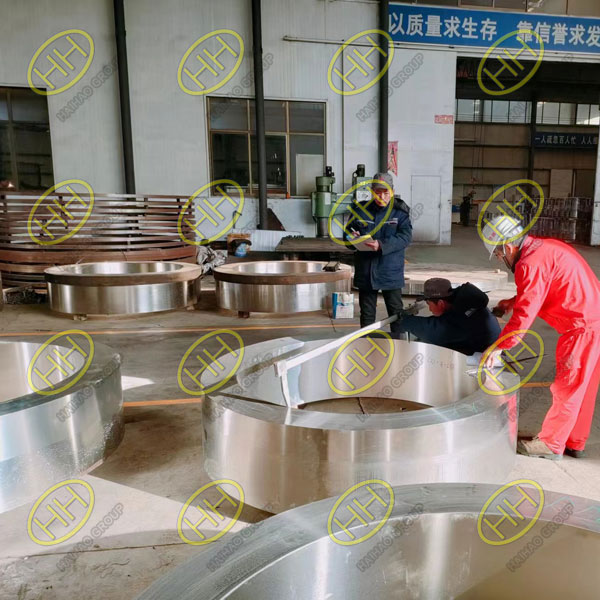Nondestructive testing methods for large forgings
Whether employing macroscopic structure examination, microscopic analysis, or performance and composition determination, these methods are inherently destructive. For certain critical and large-scale forgings, destructive methods fall short of meeting the stringent requirements of quality inspection. This is primarily due to their uneconomical nature and, equally importantly, to avoid the one-sidedness associated with destructive examinations. The advent of nondestructive testing (NDT) technology presents a more advanced and comprehensive means for forging quality inspection.
Common non-destructive testing methods applied to forging quality inspection include magnetic particle testing, penetrant testing, eddy current testing, and ultrasonic testing.
Magnetic Particle Testing: Widely used for inspecting the surfaces or near-surface defects in ferromagnetic metals or alloy forgings, such as cracks, fissures, white spots, non-metallic inclusions, laminations, folds, carbides, or ferrite bands. This method is specifically applicable to the inspection of ferromagnetic materials and is unsuitable for forgings made of austenitic steel.
Penetrant Testing: In addition to inspecting ferromagnetic forgings, this method is capable of examining the surface defects of non-ferromagnetic material forgings, such as cracks, porosity, folds, etc. It is typically employed for surface defect inspection and does not reveal defects hidden below the surface.
Eddy Current Testing: Applied to inspect the surface or near-surface defects of conductive materials, eddy current testing is particularly useful for non-ferrous alloy forgings.
Ultrasonic Testing: Utilized for examining internal defects in forgings, such as shrinkage holes, white spots, internal cracks, inclusions, etc. Although this method is convenient, fast, and cost-effective, accurately determining the nature of defects can be challenging.
As NDT technology evolves, newer methods such as acoustic resonance, acoustic emission, holographic laser interferometry, CT scans, and others are emerging. The application of these advanced techniques in forging inspection promises a significant enhancement in the overall quality inspection standards. The continuous development in nondestructive testing methods ensures that the level of forging quality inspection is substantially elevated.

